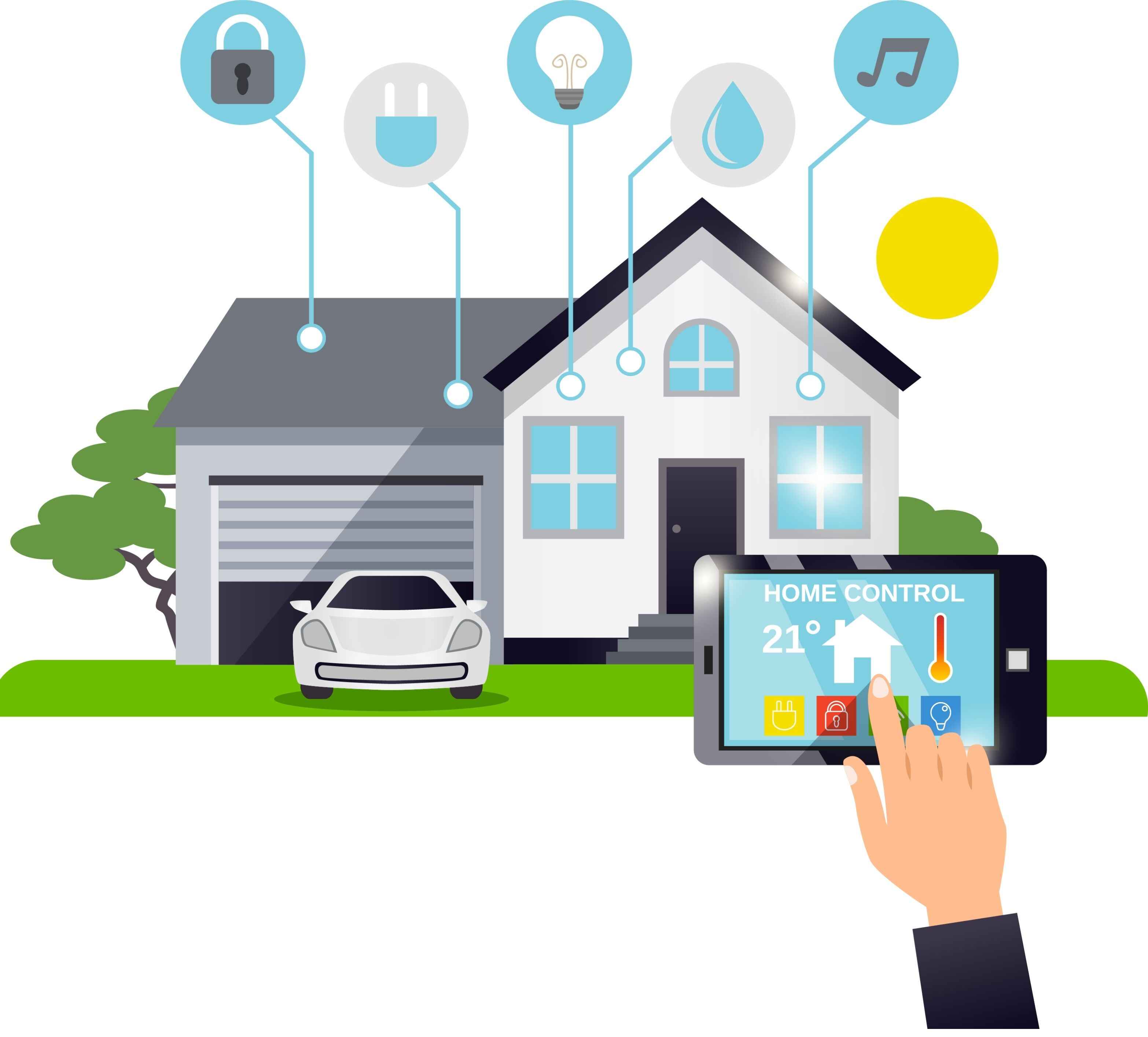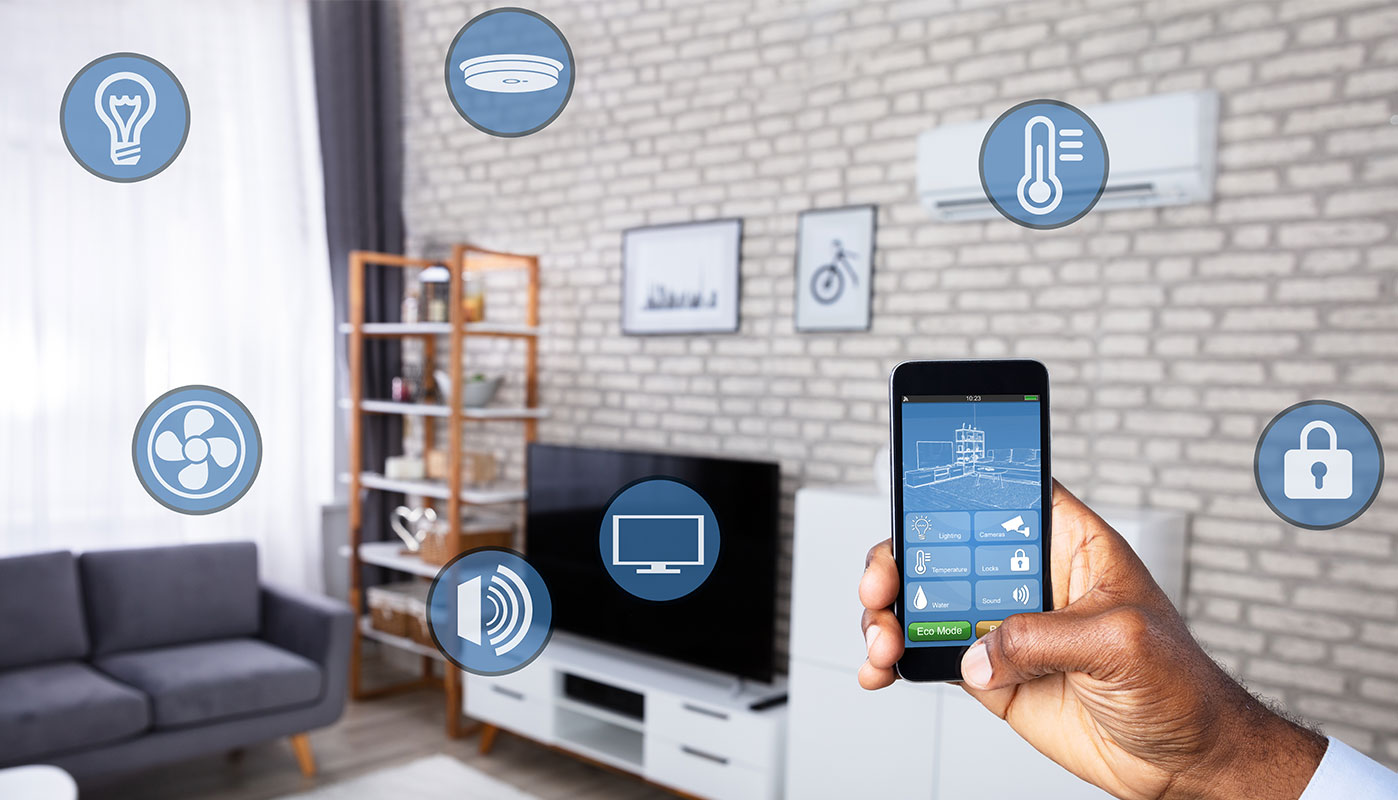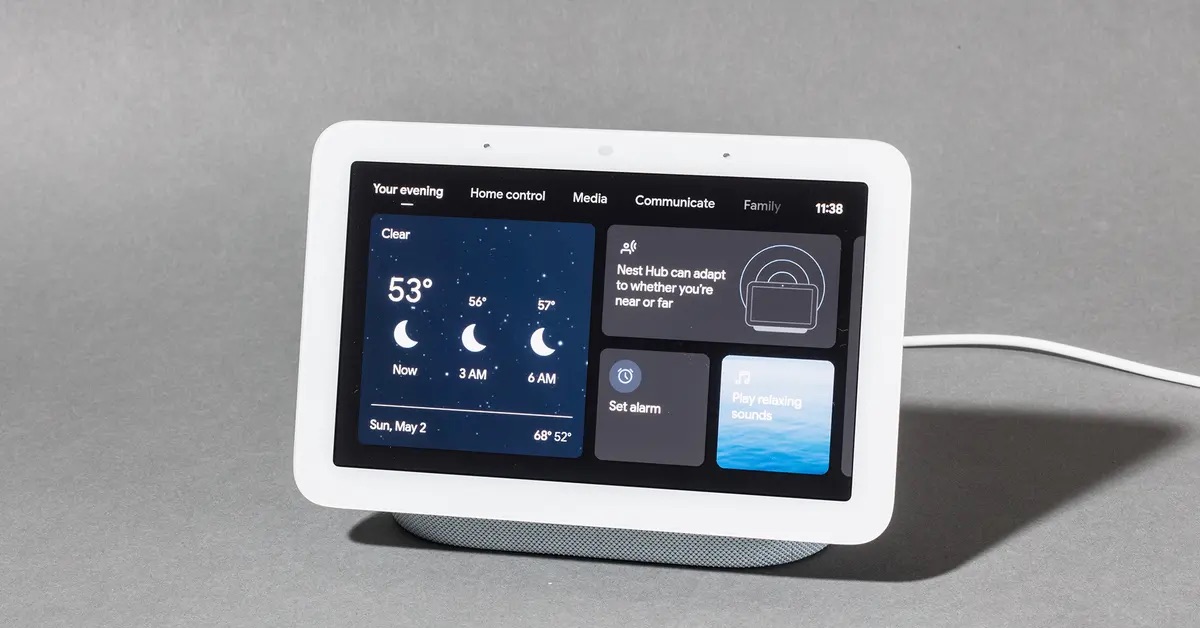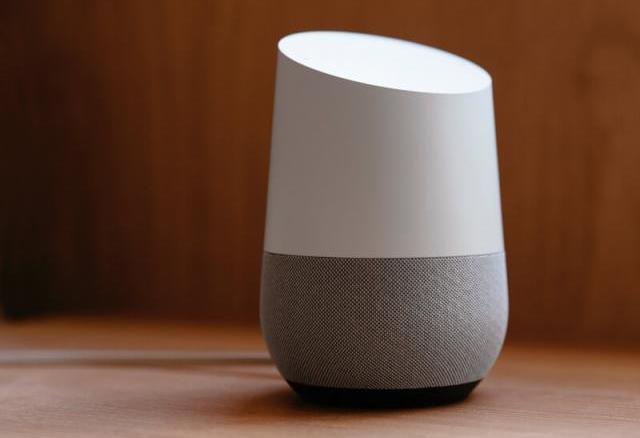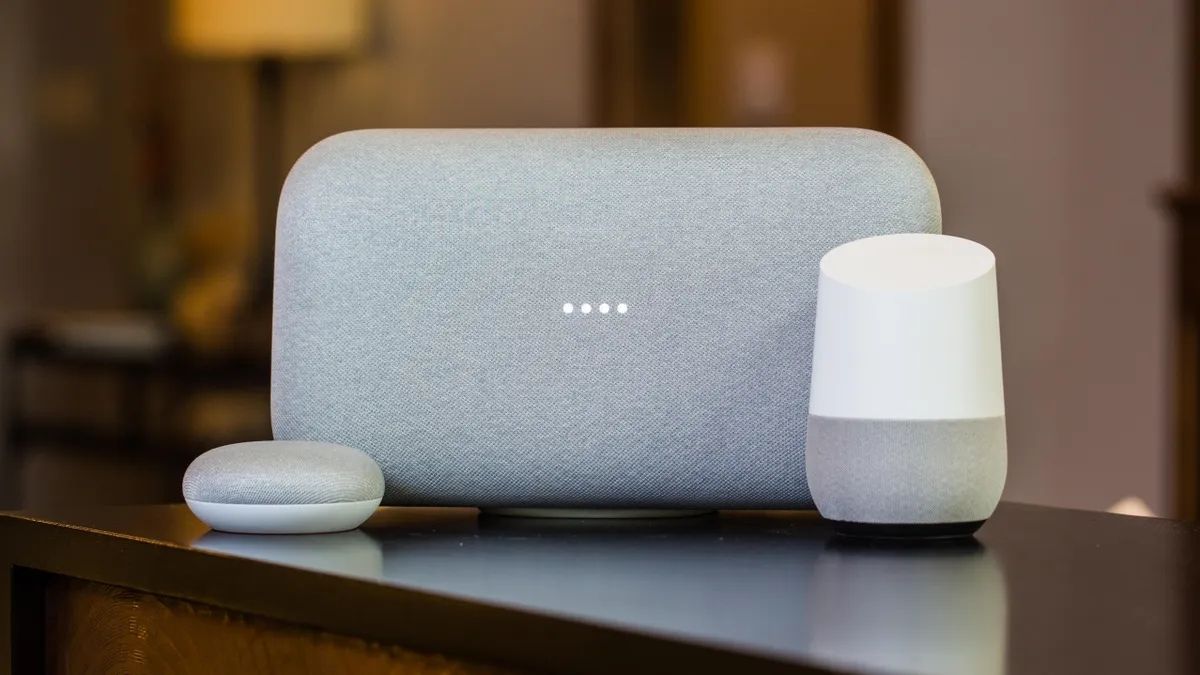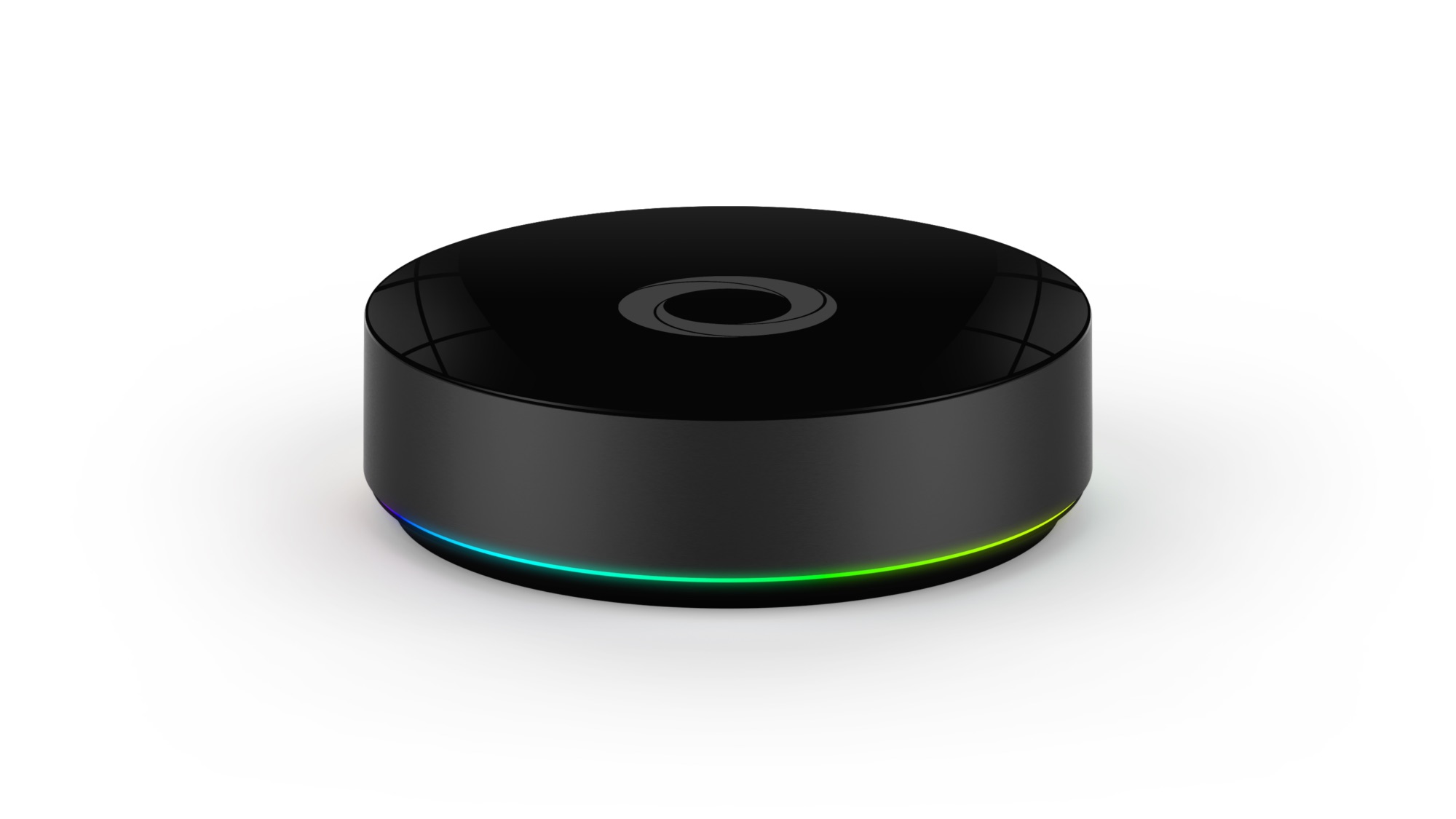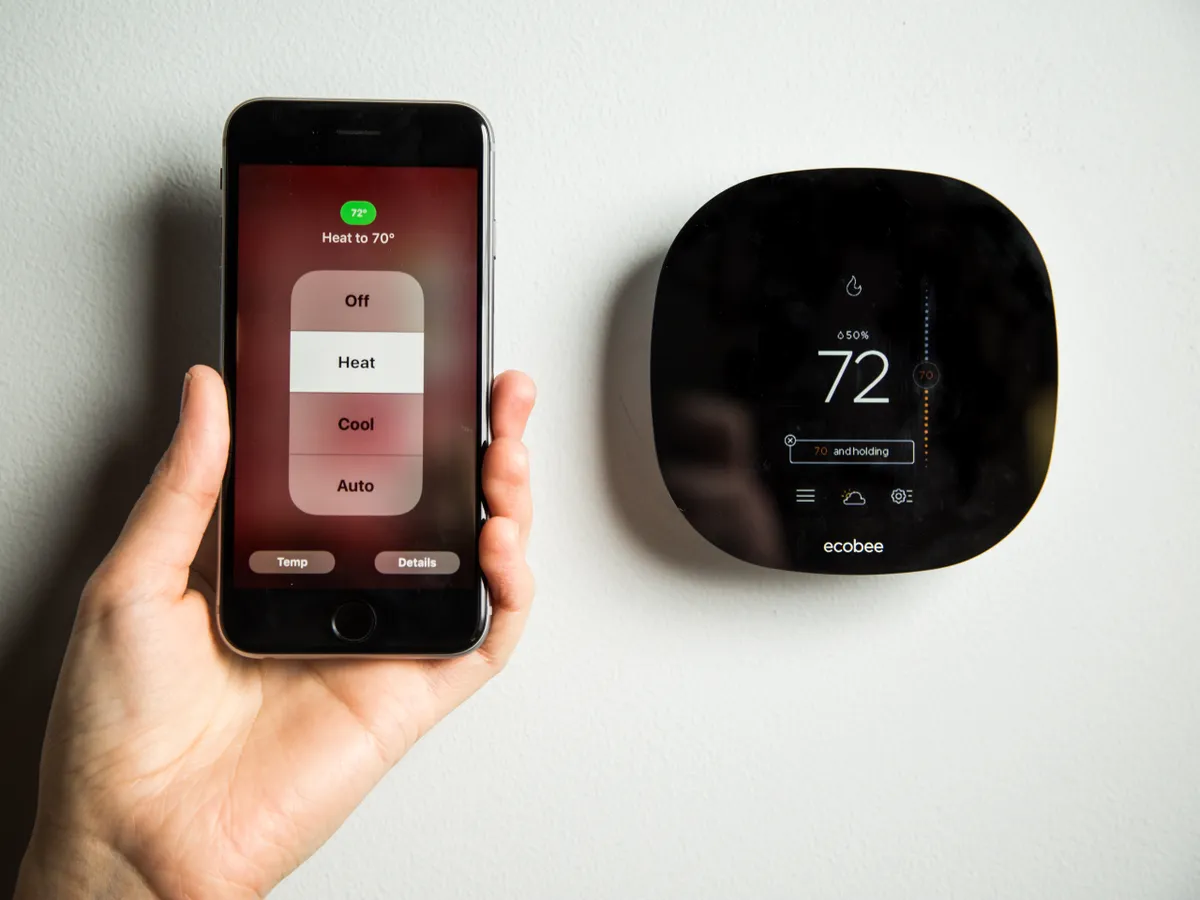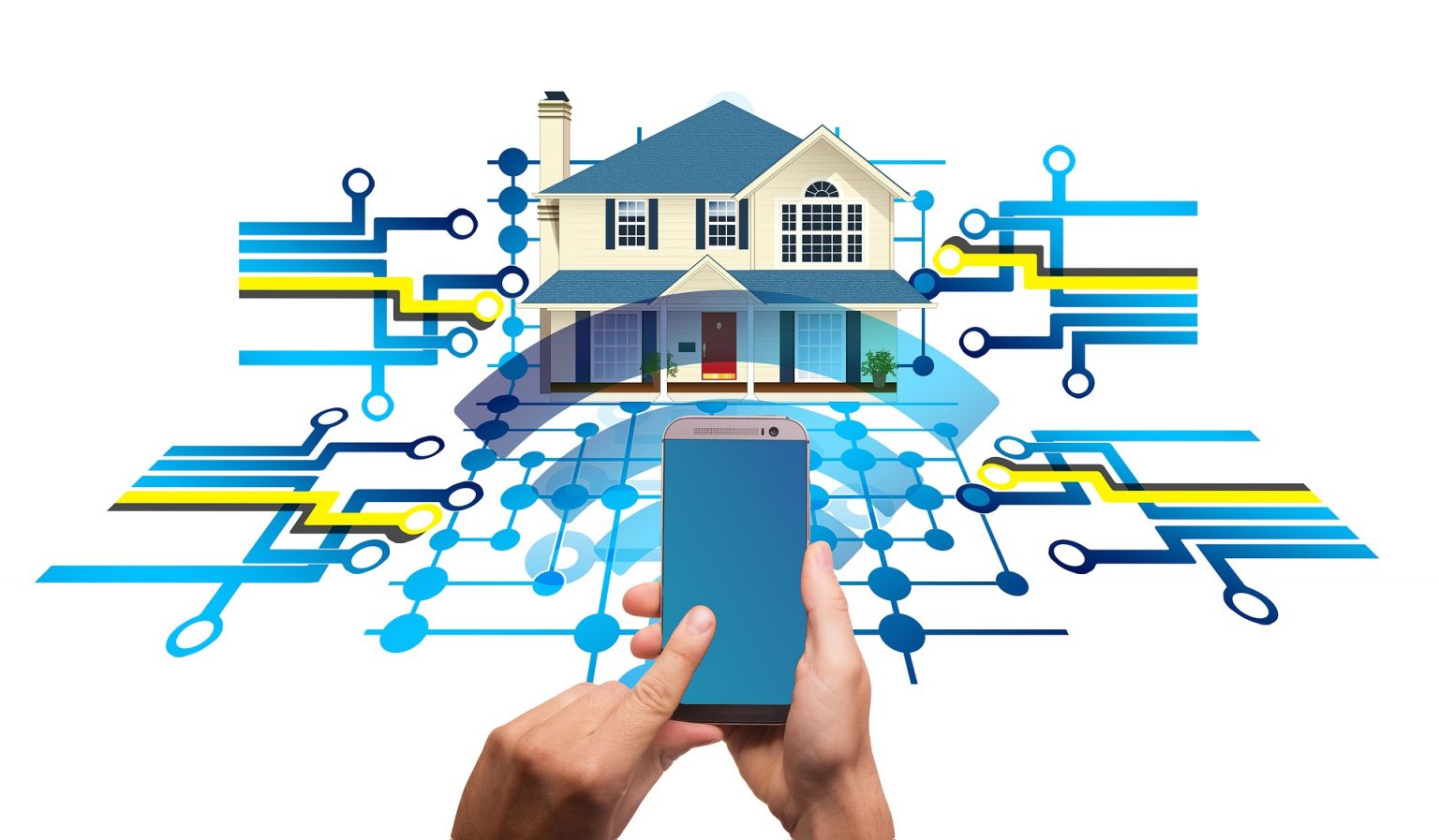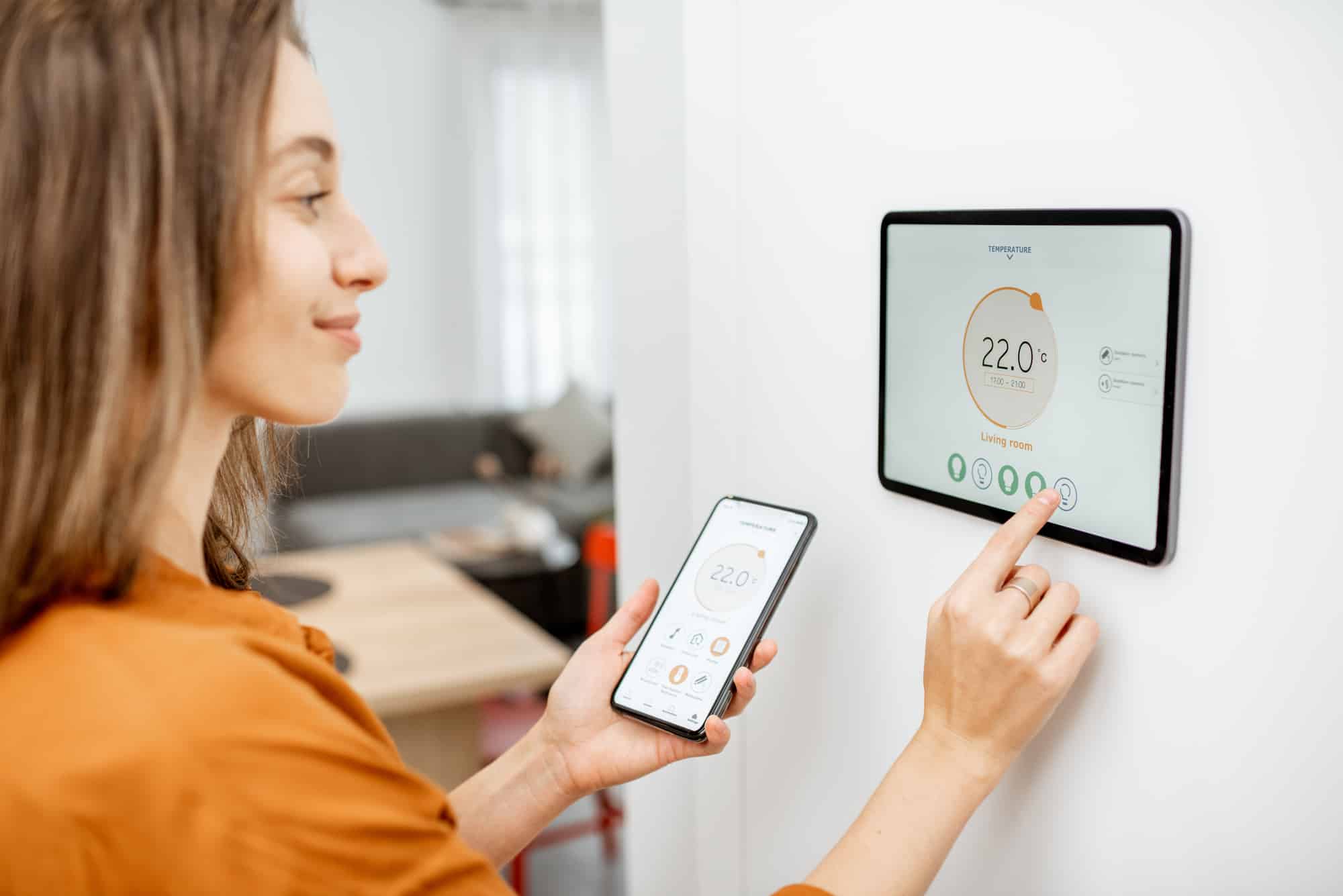Introduction
Welcome to the world of smart homes, where technology seamlessly integrates with our daily lives to bring us convenience, safety, and efficiency. The advancement of smart home technology has revolutionized the way we interact with our living spaces, offering a range of features and benefits that were once only a part of our imagination.
A smart home is a dwelling that is equipped with various interconnected devices and systems that can be remotely controlled and automated. These devices and systems work together to enhance the overall functionality and comfort of the home, allowing homeowners to manage tasks and control various aspects of their living environment with ease.
At the heart of a smart home lies a network of sensors, actuators, and devices that communicate with each other through the Internet of Things (IoT). This connectivity enables homeowners to control and monitor their homes remotely through smartphones, tablets, or voice assistants.
With the rapid advancements in technology, smart homes have become more accessible and affordable, making them a desirable choice for homeowners looking to enhance their living experience. From security and safety features to energy efficiency and home automation, a smart home offers a range of benefits that cater to modern needs and lifestyles.
In this article, we will delve into the various aspects of smart home technology and explore the features and advantages it brings. We will discuss the security and safety features that protect your home and loved ones, the energy-efficient solutions that help you reduce your carbon footprint and save on utility bills, the convenience and automation features that simplify your daily routines, and much more.
Whether you are curious about the latest smart devices or considering transforming your own home into a smart sanctuary, this article will provide you with valuable insights and information to help you navigate the world of smart homes.
Smart Home Technology
Smart home technology encompasses a wide range of devices and systems that work together to create an intelligent and interconnected living environment. These technologies are designed to enhance the functionality, convenience, and security of your home. Let’s explore some of the key components of smart home technology:
- Home Automation Systems: Home automation systems form the backbone of a smart home. They allow you to control various aspects of your home, such as lighting, temperature, security systems, entertainment systems, and more. With the help of sensors, actuators, and a centralized hub, you can easily manage and customize these systems to meet your preferences.
- Voice Assistants: Voice assistants have become an integral part of smart homes. They enable you to interact with your home automation systems using simple voice commands. Whether it’s adjusting the temperature, playing music, or even ordering groceries, voice assistants like Amazon Alexa and Google Assistant make controlling your smart home a breeze.
- Smart Lighting: Smart lighting systems allow you to control and automate your lights. You can dim or brighten lights, change colors, and even set schedules using your smartphone or voice commands. Smart lighting not only adds convenience but also helps to save energy by automatically turning off lights when not in use.
- Smart Thermostats: Smart thermostats are designed to optimize energy consumption by learning your heating and cooling preferences. They can be controlled remotely, allowing you to adjust the temperature from anywhere. Some smart thermostats even utilize geofencing technology to detect when you are away from home and adjust the temperature accordingly, helping you save on energy bills.
- Smart Security Systems: Home security is a top priority for homeowners, and smart security systems offer advanced features to protect your home. With smart security cameras, doorbell cameras, and motion sensors, you can monitor your home in real-time, receive alerts on your smartphone, and even communicate with visitors remotely. These systems provide peace of mind by enhancing the security of your home.
These are just a few examples of the smart home technologies available in the market. The beauty of smart homes lies in their flexibility and scalability, allowing you to start small and expand your system as your needs and budget allow. Whether you want a fully automated home or prefer to focus on specific areas, smart home technology offers endless possibilities to make your living space smarter and more enjoyable.
Security and Safety Features
One of the most compelling reasons to invest in a smart home is the enhanced security and safety it provides. Smart home technology offers a wide range of features and devices that work together to protect your home and loved ones. Let’s explore some of the key security and safety features of smart homes:
- Smart Locks: Smart locks eliminate the need for physical keys and provide convenient and secure access to your home. With smart locks, you can lock and unlock your doors remotely using your smartphone or a key fob. Some smart locks even offer features like temporary access codes for guests and activity logs to track who enters and exits your home.
- Smart Security Cameras: Smart security cameras allow you to keep an eye on your home both inside and outside. These cameras provide real-time video surveillance and can be accessed remotely from your smartphone. Many smart cameras also feature motion detection, night vision, and even facial recognition to alert you of any suspicious activities.
- Video Doorbells: Video doorbells have become increasingly popular for their ability to enhance home security. These devices not only allow you to see who is at your door but also enable two-way communication, letting you speak to visitors even when you’re not at home. Video doorbells are equipped with motion sensors, so you receive instant alerts when someone approaches your doorstep.
- Smart Smoke Detectors: Smart smoke detectors offer advanced features beyond traditional smoke alarms. They can detect smoke, carbon monoxide, and even sudden changes in temperature, sending alerts to your smartphone or triggering alarms to ensure early detection of potential dangers.
- Smart Leak Detectors: Water leaks can cause significant damage to your home, leading to costly repairs. Smart leak detectors can detect and alert you to leaks and floods, helping you take immediate action to prevent further damage. Some devices can even automatically shut off the water supply to minimize the impact of a leak.
- Alarm Systems: Smart alarm systems offer comprehensive security by integrating various sensors, cameras, and detectors. These systems can be armed and disarmed remotely, and they provide instant notifications in case of a breach or emergency. Some systems also offer professional monitoring services for added peace of mind.
With these security and safety features, smart homes provide a greater level of protection for your home and family. Whether you are at home or away, you can have peace of mind knowing that your smart home is equipped with cutting-edge technology to deter intruders, detect potential risks, and respond swiftly to emergencies.
Energy Efficiency
One of the key benefits of owning a smart home is its ability to significantly improve energy efficiency. Smart home technology offers various features and devices that help homeowners reduce energy consumption, lower utility bills, and minimize their environmental impact. Let’s explore some of the ways in which smart homes promote energy efficiency:
- Smart Thermostats: Smart thermostats are one of the most popular energy-saving devices in smart homes. These devices learn your temperature preferences and adjust heating and cooling based on occupancy and usage patterns. They can be controlled remotely, allowing you to optimize energy usage even when you’re away from home.
- Smart Lighting: Smart lighting systems offer advanced control and automation features that help save energy. They can be programmed to turn off lights when no one is in the room, adjust brightness based on natural light levels, and even respond to motion sensors. With smart lighting, you can effortlessly create a more energy-efficient home.
- Energy Monitoring: Smart homes often feature energy monitoring devices that provide real-time information on energy usage. These devices track electricity consumption and provide insights into which appliances or systems are using the most energy. By having this information at your fingertips, you can make informed decisions to reduce wasteful energy consumption.
- Smart Appliances: Smart appliances, such as refrigerators, washing machines, and dishwashers, offer energy-saving features that help optimize their usage. They can automatically adjust cycles based on load size, time of day, and energy rates. Some smart appliances can even connect to the energy grid, optimizing energy usage during low-demand periods.
- Solar Power Integration: Smart homes often incorporate solar panels and solar power management systems. These systems harness clean energy from the sun, reducing reliance on traditional power sources. With the ability to store and manage solar energy, homeowners can maximize their use of renewable energy and minimize their dependence on the grid.
By implementing these energy-saving features, smart homes can significantly reduce energy waste and lower utility bills. In addition to the financial benefits, energy efficiency also contributes to environmental sustainability by reducing greenhouse gas emissions and minimizing reliance on fossil fuels.
As technology continues to advance, smart homes are becoming even more energy-conscious. Manufacturers are continually developing new devices and platforms to improve energy efficiency and help homeowners create greener living spaces.
Convenience and Automation
One of the standout features of smart homes is the level of convenience and automation they offer. Through interconnected devices and intuitive controls, smart homes streamline daily tasks, simplify routines, and enhance overall living comfort. Let’s explore some of the ways in which smart homes provide convenience and automation:
- Voice Control: Voice assistants like Amazon Alexa and Google Assistant allow you to control various aspects of your smart home using simple voice commands. From adjusting the lights and thermostat to playing music and even ordering groceries, voice control brings a new level of hands-free convenience to your everyday life.
- Automated Lighting: With smart lighting systems, you can automate lighting schedules and scenes to match your preferences and routines. Imagine waking up to gently lit rooms or coming back to a well-lit home after work. Smart lighting gives you control over ambiance and eliminates the need for manual adjustments.
- Smart Home Hubs: Smart home hubs act as a central control system for all your connected devices. They allow you to manage and customize your smart home experience from a single interface. With a smart home hub, you can control devices, check statuses, and create routines that automatically perform multiple actions with a single command or trigger.
- Automated Home Security: Smart home security systems offer automated features that make securing your home effortless. You can program your system to arm itself when you leave and disarm when you return. Some systems even utilize geofencing technology to detect when you’re away and automatically activate security features.
- Smart Appliances: Smart appliances bring automation and convenience to household chores. From washing machines that schedule and optimize cycles to smart refrigerators that create shopping lists and suggest recipes based on inventory, these appliances make daily tasks more efficient and enjoyable.
- Smart Entertainment: Smart home technology extends to entertainment systems as well. With smart TVs, streaming devices, and sound systems, you can effortlessly connect and control your favorite media content using your smartphone or voice commands. Create personalized entertainment experiences with ease.
By incorporating convenience and automation into your home, smart home technology simplifies your daily routines and frees up time for the things that matter most. It brings a new level of control and customization, allowing you to create an environment that aligns with your lifestyle preferences.
Whether it’s controlling your home with a simple voice command, automating lighting and security, or enjoying a seamlessly connected entertainment system, smart homes offer a world of convenience and automation that enhance your living experience.
Entertainment and Multimedia
In addition to its practical benefits, smart home technology also offers a wealth of entertainment and multimedia options that enhance your home entertainment experience. With interconnected devices and streaming capabilities, smart homes bring a seamless and immersive multimedia experience to your living space. Let’s explore some of the ways in which smart homes enhance entertainment:
- Smart TVs: Smart TVs offer a new level of connectivity and convenience. With built-in internet access and streaming capabilities, you can access a wide range of streaming services, such as Netflix, Hulu, and Amazon Prime, directly from your TV. Some smart TVs even feature voice control and personalized recommendations based on your viewing habits.
- Streaming Devices: Streaming devices, such as Apple TV, Roku, and Chromecast, transform any TV into a smart entertainment hub. These devices connect to your TV and enable you to stream content from various platforms and services. With a streaming device, you can access movies, TV shows, music, and even play games on your TV with ease.
- Whole-Home Audio: Smart home technology allows you to create a synchronized audio experience throughout your home. With whole-home audio systems, you can play music in multiple rooms simultaneously or choose specific rooms for different audio zones. You can access your favorite music streaming services and control the audio system with your voice or through a mobile app.
- Home Theater Systems: Smart home theaters bring the cinematic experience into your own home. With the integration of smart entertainment devices, you can control your audio, video, and lighting systems seamlessly. Smart home theaters also offer features like voice control, personalized presets, and immersive sound technologies to enhance your movie-watching experience.
- Smart Speakers: Smart speakers, such as the Amazon Echo or Google Nest speakers, not only provide entertainment but also act as a central hub for your smart home. These speakers allow you to play music, listen to podcasts, set timers, ask questions, and control other smart devices throughout your home using just your voice.
- Interactive Gaming: Smart home technology has opened up new possibilities for interactive and immersive gaming experiences. Whether it’s virtual reality gaming, motion-controlled gaming, or multiplayer experiences with smart consoles, smart homes provide a dynamic and engaging gaming environment that caters to the needs of both casual and avid gamers.
With the integration of entertainment and multimedia features, smart homes create a seamless and immersive environment for enjoying music, movies, TV shows, and gaming experiences. Whether you want to relax and unwind with your favorite content or impress guests with a captivating home theater setup, smart home technology brings a new level of entertainment to your living space.
Health and Wellness
Smart homes are not only about convenience and entertainment; they also play a significant role in promoting health and wellness. With the integration of advanced sensors, monitoring devices, and wellness-focused features, smart homes provide an environment that supports your physical and mental well-being. Let’s explore some of the ways in which smart homes contribute to health and wellness:
- Sleep Monitoring: Smart beds and sleep-tracking devices allow you to monitor your sleep patterns and provide insights into the quality and duration of your sleep. Utilizing sensors and advanced algorithms, these devices can analyze your sleep and provide personalized recommendations to help optimize your sleep habits.
- Smart Appliances: Smart home appliances can assist in maintaining a healthy lifestyle. For example, smart refrigerators can track food expiration dates and suggest healthy recipes based on the ingredients you have. Smart ovens can have pre-set cooking modes for healthier options like baking and grilling.
- Wellness Programs: Smart home devices, such as voice assistants or dedicated wellness apps, can guide you through wellness routines and workouts. These programs can provide exercise instructions, mindfulness exercises, guided meditation sessions, and even monitor your progress and provide motivation.
- Indoor Air Quality: Smart home technology can monitor and improve indoor air quality, which has a significant impact on your overall health. Smart air purifiers and sensors can detect pollutants, adjust ventilation, and provide real-time data on air quality. This helps create a healthier and more comfortable living environment.
- Home Gym Integration: Smart homes can integrate with home gym equipment to create a personalized and connected fitness experience. These systems can adjust workout settings based on user preferences, track performance metrics, and provide interactive training sessions through on-screen guidance or virtual trainers.
- Emergency Response: Smart home security systems can include emergency response features, such as panic buttons and medical alert systems. In case of a medical emergency or threat, these systems can automatically notify emergency services and provide critical information to assist them in responding effectively.
By incorporating health and wellness features, smart homes empower individuals to take control of their well-being in the comfort of their own homes. They provide tools and resources that support healthy habits, facilitate better sleep, and create an environment conducive to overall physical and mental health.
As smart home technology continues to evolve, we can expect to see even more innovative ways in which it can contribute to our health and well-being, providing personalized care and assistance right at our fingertips.
Home Monitoring and Management
Smart home technology goes beyond convenience and entertainment—it also provides comprehensive home monitoring and management capabilities. With a range of smart devices and sensors, homeowners can keep a close eye on their living environment and efficiently manage various aspects of their home. Let’s explore some of the ways in which smart homes enable effective home monitoring and management:
- Security Monitoring: Smart home security systems offer extensive monitoring capabilities to keep your home safe. With connected cameras, motion sensors, and door/window sensors, you can monitor your home in real-time through video feeds and receive instant alerts on your smartphone in case of any breaches or suspicious activities.
- Environmental Monitoring: Smart home devices can monitor and manage environmental factors to ensure a comfortable and healthy living environment. Temperature and humidity sensors detect changes in indoor conditions and allow you to adjust settings accordingly. Some smart homes even incorporate air quality sensors to monitor pollutants and provide recommendations for improving air quality.
- Energy Monitoring: Smart homes enable homeowners to monitor their energy usage in real-time. Energy monitoring devices provide insights into energy consumption, helping you identify inefficiencies and make informed decisions to reduce energy waste. By monitoring energy usage, you can take steps to improve energy efficiency and lower utility bills.
- Water Monitoring: Smart water monitoring systems detect leaks, unusual water usage patterns, or abnormalities in water pressure. By receiving alerts and real-time data on water consumption, you can identify and address plumbing issues promptly, ultimately minimizing water damage and reducing water waste.
- Appliance Management: Smart home technology allows for remote control and management of appliances. Through connected devices, you can check the status of appliances, schedule operations, and even receive notifications when certain tasks are completed. This level of appliance management adds convenience and efficiency to your daily routines.
- Remote Access and Control: Smart homes offer remote access and control capabilities, allowing homeowners to monitor and manage their homes from anywhere in the world. Whether it’s adjusting the thermostat, controlling lights, or viewing security camera feeds, you can stay connected and in control of your home no matter where you are.
With comprehensive monitoring and management features, smart homes provide homeowners with the tools and information needed to efficiently manage their living spaces. By leveraging the data and insights provided by smart devices, homeowners can optimize energy usage, ensure the security of their home, and create a comfortable and safe living environment.
The ongoing advancements in smart home technology continue to expand the capabilities of home monitoring and management, offering homeowners even greater control and peace of mind over their living spaces.
Connected Appliances
One of the key components of a smart home is the integration of connected appliances. These appliances are equipped with smart features and connectivity options that provide homeowners with enhanced functionality, convenience, and control. Let’s explore the advantages and benefits of having connected appliances in your smart home:
- Convenience and Automation: Connected appliances bring convenience and automation to your daily routines. From smart refrigerators that create shopping lists and suggest recipes based on available ingredients to connected ovens that can be preheated remotely, these appliances make life easier by simplifying everyday tasks.
- Remote Control and Monitoring: With connected appliances, you have the ability to control and monitor them remotely. You can use your smartphone or a dedicated app to adjust settings, receive notifications, and even check the status and progress of ongoing tasks. This allows you to stay connected and in control, even when you’re not at home.
- Energy Efficiency: Connected appliances often come equipped with energy-saving features. For example, smart washing machines can detect load size and adjust water usage accordingly, while smart dishwashers can optimize water and energy consumption based on the number of items being washed. By utilizing these features, you can reduce your environmental footprint and save on utility bills.
- Personalized Experiences: Connected appliances can learn from your preferences and adapt to your needs. Some appliances have machine learning capabilities that enable them to understand your usage patterns and automatically adjust settings to deliver a more personalized experience. This can include adjusting cooking times, creating custom cycles, or even recommending settings based on past usage.
- Integration and Interconnectivity: Connected appliances can seamlessly integrate with other smart devices in your home. For example, a smart refrigerator can communicate with your smart grocery list app to notify you when certain items are running low. Integration with voice assistants also allows you to control appliances using simple voice commands, enhancing the overall interconnectedness of your smart home.
- Enhanced Functionality: Connected appliances often come with additional functionalities and features that enhance their capabilities. For instance, smart coffee machines can be programmed to have your coffee ready as soon as you wake up, while smart vacuum cleaners can map your home and autonomously navigate around obstacles. These added features contribute to a more efficient and streamlined home experience.
Connected appliances play a significant role in the seamless operation and functionality of a smart home. By leveraging the power of connectivity, automation, and advanced features, these appliances transform everyday tasks into convenient and enjoyable experiences. Whether it’s saving time, reducing energy consumption, or personalizing your home routines, connected appliances are an integral part of creating a truly smart and efficient living space.
Designing and Building a Smart Home
Designing and building a smart home involves careful planning and consideration to create a living space that seamlessly integrates technology, functionality, and aesthetics. Here are some key factors to consider when designing and building a smart home:
- Identify Your Needs: Start by identifying your specific needs and priorities for your smart home. Determine which features and functionalities are most important to you, such as security, energy efficiency, convenience, or entertainment. This will help guide your decision-making process and ensure that your smart home meets your requirements.
- Research and Select the Right Devices: Conduct thorough research to select the right devices and systems for your smart home. Consider factors such as compatibility with your existing infrastructure, reliability, user-friendly interfaces, and scalability. Look for devices and systems that provide a seamless integration experience and are backed by reliable customer support.
- Create a Smart Home Network: A robust and reliable network is essential for a fully functioning smart home. Ensure that your home has a strong Wi-Fi signal throughout, or consider installing a mesh network system to extend coverage. Design your network with the capacity to handle multiple connected devices and the bandwidth requirements of data-intensive applications.
- Consult with Professionals: While many smart home installations can be DIY projects, consulting with professionals can ensure that the installation is completed correctly and that all components are properly integrated. Professionals can also provide valuable insights and recommendations based on their expertise, helping you design a more efficient and effective smart home.
- Consider Future Upgrades: Plan for future upgrades and expansions when designing your smart home. Technology advances rapidly, so it’s important to future-proof your home infrastructure. Install wiring and connections that support emerging technologies and allow for easy integration of new devices and upgrades without major renovations.
- Balance Technology and Aesthetics: Incorporate smart technology in a way that complements your home’s design and aesthetics. Choose devices and systems that blend seamlessly into your existing decor or consider customizing them to match your style. Work with interior designers or smart home professionals who can help integrate technology without compromising the visual appeal of your home.
- Ensure Privacy and Security: With the increased connectivity of a smart home, it’s crucial to prioritize privacy and security. Implement strong network security measures, use encrypted connections, and regularly update firmware and passwords. Additionally, review the privacy policies and data collection practices of the devices and systems you use to mitigate potential risks.
Designing and building a smart home is an exciting journey that requires careful planning, research, and consideration. By taking the time to identify your needs, select the right devices, and create a well-designed infrastructure, you can enjoy the benefits of a smart home that seamlessly integrates technology into your daily life while enhancing your overall living experience.
Conclusion
Smart home technology has revolutionized the way we interact with our living spaces, offering a range of features and benefits that enhance our daily lives. From security and safety features to energy efficiency, convenience, entertainment, health, and wellness, smart homes have become a desirable choice for homeowners looking to embrace the future of living.
With interconnected devices, seamless automation, and advanced monitoring capabilities, smart homes provide homeowners with enhanced control, convenience, and peace of mind. By integrating smart home technology into our living environments, we can optimize energy usage, improve security and safety, personalize our entertainment experiences, and create a more comfortable and efficient home.
Designing and building a smart home requires careful planning, research, and consideration. It is important to identify our specific needs, select the right devices and systems, create a strong network infrastructure, and ensure a balance between technology and aesthetics. By taking these steps, we can design and build a smart home that meets our individual requirements and seamlessly integrates into our lifestyle and home design.
As technology continues to advance, the possibilities for smart homes are expanding. Innovations in artificial intelligence, machine learning, and data analytics will pave the way for even more intelligent and personalized experiences in our homes. The future of smart homes holds exciting opportunities to further enhance connectivity, convenience, and sustainability.
Whether you are considering transforming your current home into a smart sanctuary or building a new smart home from the ground up, embracing smart home technology can significantly improve your living experience. Stay informed about the latest advancements, consult with professionals when needed, and enjoy the benefits of a home that is not just intelligent, but truly smart.







